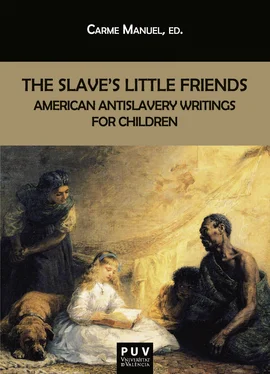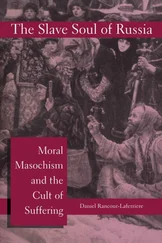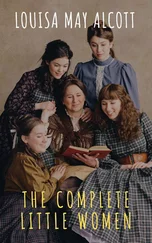Stowe had skillfully blended nineteenth-century sentimental fictional conventions to describe the evils of the national sin, creating black characters with whom white middle-class readers could easily identify and sympathize. As a children’s story and in contrast to later versions, Pictures and Stories from Uncle Tom’s Cabin does not “rely on the racialized stereotypes of the original” (105) but changes the original novel in two ways. Firstly, “by minimizing racial markers,” such as racialized language and physical descriptions of the black characters; and secondly, by restructuring the tale and “maximizing the powerful motifs of fairy tale and legend” in creating the characters of the two main black child characters in the tale (Hochman 105), Harry, the son of George and Eliza, and Topsy, the wild slave girl whom Miss Ophelia attempts to reform and convert, and who will learn the tenets of the Christian faith, love and respect, by following the example of angelical little Eva. These two figures “challenged common antebellum assumptions about racial difference, children’s reading, and sympathy,” and offered substantial means of “absorption and identification” to white middle-class young readers (Hochman 106).
Together with the publication of Pictures and Stories from Uncle Tom’s Cabin John P. Jewett also took advantage of the sensational reception of Uncle Tom’s Cabin to issue three texts— Minnie May, and Other Rhymes , Grandmother’s Stories for Little Children and The Edinburgh Doll and Other Tales for Children — in his antislavery toy book series. THE EDINBURGH DOLL AND OTHER TALES FOR CHILDREN(1854) appeared as written by Aunt Mary, a pseudonym. Scholars are not sure about the author’s identity. Deborah De Rosa, in her anthology of abolitionist juvenile literature, suggests that she may have been Mrs. Hughes, a Briton who emigrated to Philadelphia and wrote children’s stories under this very same pen-name (2005: 215) or, as Sara Lindey proposes, she might have been Mary Low, who wrote A Peep Into Uncle Tom’s Cabin , under the name of Aunt Mary, a book also published by John R. Jewett (72).
The Edinburgh Doll tells the story of little Mary, who falls ill because she feels too deeply for slaves. Confronted with death, she donates her doll to a Boston abolitionist fair to be auctioned together with a picture of Eva, the angelical child in Uncle Tom’s Cabin , in a reenactment of the well-known nineteenth-century literary death-bed scene. The protagonist of the poem is thus explicitly inspired by Eva St. Clair, the immaculate child, whose death redeems her family and slaves from the evil enclosed in the slavery system. As the epitome of the sentimental child, Eva’s death resembles a Christian-like martyrdom. Her sacrifice as an innocent embodiment of the pains of slavery is aimed at converting the people around her to the antislavery political agenda. For De Rosa, little Mary shows herself to be a more powerful character than Stowe’s Eva since she “empowers females—Mary, her mother, and her doll—not only to voice their political views but also to participate as successful public, abolitionist activists” (2005: 216). The story highlights the power of writing and specifically the impact of abolitionist texts for children, about the abuses of the system, since it is through reading that the protagonist comes to understand and feel with the exploited enslaved women, men and children.
LOUISA IN HER NEW HOMEappeared in 1854. The author’s name, S.C.C., has been identified as belonging to Sarah C. Carter (De Rosa 2005: 161), since the title page refers to her as the author of The Wonderful Mirror (1855). She was also the editor of The Choice Gift, or Golden Sands, from the River of Literature “like spangles shining through the crystal wave” (Boston: J. Buffum, 1850), which includes pieces by Mrs. Sigourney, John Locke, H.W. Longfellow, Mrs. Hemans, and many other well-known English language writers; and in 1853 she authored Lexicon of Ladies’ Names, with Their Floral Emblems (Boston: J. Buffum).
Louisa in her New Home was published by the Pennsylvania Anti-Slavery Society, an organization founded by James and Lucretia Mott, and Robert Purvis, among others, in 1838. Historian Ira V. Brown explains (63-64) that, after the schism that the American Anti-Slavery Society suffered in 1840 because of the internal disagreement on Garrison’s increasing radicalism with its anticlerical and disunionist views, the Pennsylvania Anti-Slavery Society remained loyal to Garrisonian principles —“No Union with Slaveholders”—even if it was difficult for some of its members to accept Garrison’s hostility to political action and continue with his moral suasion strategies. Thus, “the work of the society consisted largely of a many-sided propaganda campaign, designed primarily to persuade Northern people to stop condoning and supporting the institution of slavery” (66). After 1845 it concentrated mainly on running “the operations of the underground railroad, in which many of its members were deeply involved,” since “Philadelphia was one of the few places where the business of helping fugitive slaves to escape was well organized, under the direction of an efficient Vigilance Committee” (67-68). It is important to remember that in 1849 Henry “Box” Brown had himself crated in a wooden box and shipped to Philadelphia, and had been welcomed by members of the Society.
Sarah C. Carter may have been a member of the Pennsylvania Anti-Slavery Society and, as her text evinces, she was well aware of the keen interest of its members in helping fugitives as well as in “the various court cases growing out of resistance to the fugitive slave law, such as the notorious treason trials resulting from the Christiana Riot of 1851” (Brown 68). In September of that year in Christiana, Pennsylvania, a slave owner arrived to retrieve six of his escaped slaves, who were being protected by a local vigilance group that was helped by more than fifty African Americans living in the area. The confrontation between the two parties resulted in a violent riot with the death of the slave owner, and thirty-nine men, white and black, arrested and brought to trial on federal charges of treason on the basis of the Fugitive Slave Act of 1850. By the end of 1851 the arrested had all been released. Their acquittal was saluted as a major blow to pro-slavery politics and a victory against the injustice of the Fugitive Slave Act. The passage of the federal Fugitive Slave Act in 1850 authorized slaveholders to pursue fugitive slaves into any territory of the United States, and claim them as property that had to be taken back to their rightful owners. Moreover, Section 7 of the Act declared that those persons who helped the fugitives or hindered the efforts of their owners to apprehend them would face legal consequences of fines and imprisonment. As seen above, this Fugitive Slave Act encouraged many people, not necessarily with abolitionist sympathies, to act against a law they considered to be unjust.
Louise in her New Home is a story that encourages children to take action against this wrong and claims that a type of civil disobedience has to be embraced by all Americans of all ages. Since the law was protecting an immoral institution, children were marshaled against it and called to break the commandment. Louisa, the central character of the narrative, is a girl protected by the comforts and love of her family. Economic upheavals threaten to disrupt her idyllic childhood, a moment that becomes the turning point of her journey towards adulthood. As in many of the abolitionist stories, it is the mother who sets an example and unveils the subversive possibilities of the domestic space. She brings Louisa to a full identification with the plight of Mary, the runaway slave, sheltered by the family, even at the risk of the girl’s health when she is exposed to the bitter truths of these racial inequalities and feels severely shocked.
Читать дальше












